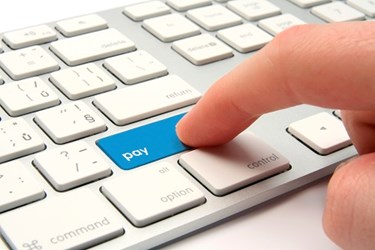Leveraging Automated Payment Technology To Improve The Patient Financial Experience

By Jeff Wood, vice president of product management, Navicure
As patients shoulder a larger portion of their healthcare costs due to increasing deductibles and rising co-payments, healthcare organizations are seeing a dramatic surge in the amount of revenue tied to patient payments. In fact, it is estimated around one-third of an organization’s earnings come from patient responsibility.
Historically, healthcare providers have focused primarily on optimizing insurance reimbursement, while collecting patient payments has largely been a secondary focus. Although they may have had processes for simply collecting copays, it wasn’t necessarily consistent or efficient. However, given healthcare’s current margin-tightening, no organization can afford to leave potential revenue on the table. Consequently, many healthcare organizations — from physician practices to urgent care facilities — are looking for effective methods for improving patient collections. Not only are they interested in enhancing the efficiency of these efforts, but they are also trying to make them much more patient-centric. As patients expect to pay more, they are demanding a higher level of customer service, wanting their healthcare providers to become more user-friendly in their financial operations.
Are Automated Solutions The Answer?
One way healthcare organizations can raise the bar on patient payment is to leverage technology such as online bill payment, automated payment plans, and credit card-on-file (CCOF) solutions. A well-designed CCOF product, for example, can improve the efficiency of patient collections while making it more convenient for patients to pay.
This software securely stores patients’ debit and credit card numbers and automatically charges patients’ cards once their financial responsibilities have been determined. Since the credit and debit card information are encrypted and follow strict PCI guidelines for the transmission and storage of financial data, organizations and patients alike can be confident these solutions will protect patient information while simplifying the payment process. Staff can reduce its reliance on paper and avoid spending time tracking down individuals to ask for final payments after insurance adjudication. At the same time, patients can have an easy-to-use payment option they don’t have to worry about.
Since CCOF technology is used regularly in other service industries with a high degree of success, healthcare organizations are beginning to see the merit of these solutions. According to a national survey conducted by HIMSS Analytics and sponsored by Navicure, many providers are starting to appreciate the potential of CCOF, viewing it as the best technology option for enhancing patient collections. More specifically, one in five feel it’s the ideal method for reducing days in accounts receivable and limiting the cost to collect, and almost 30 percent believe it’s the optimal choice for reducing bad debt and write-offs.
Unfortunately, There Is Still Hesitation
Even though providers acknowledge the possible benefits of CCOF, many organizations don’t currently use this type of technology. According to the survey, only 20 percent of providers have a CCOF system in place.
One likely reason for this reluctance is providers may think their patients are not ready for automated payment solutions and instead would prefer paper options. Yet, this perception does not play out in the real world.
Going back to the survey results, there are several areas where provider perceptions about patients’ technology tolerance differs from what patients truly feel. For example, only 57 percent of providers believe their patients would be willing to do something as simple as share their email addresses, however almost 80 percent of patients say they would be comfortable providing this information. Similarly, more than half of patients would like to receive an electronic bill or statement instead of a paper one, and yet 89 percent of providers are still sending their bills through the mail.
The disparity grows when it comes to credit card-on-file technology. While slightly more than a quarter of providers believe their patients would leave a credit card on file, almost 80 percent of patients say they would provide their debit or credit card number to be charged one time up to $200 after claim adjudication if asked by their provider. The common theme among all these statistics? Patients are actually more interested in using automated payment solutions than providers may think.
Leaving Preconceived Notions Behind
There is no question healthcare organizations are currently at a crossroads. The need to improve patient collections is paramount and the question now is how to take the first step. Do you rely on manual and paper options that are more cumbersome? Or, do you embrace emerging technologies that are capable of helping you swiftly and securely optimize patient revenue?
Patients are making their opinions clear — they are interested in more streamlined payment opportunities, and technology like CCOF is an attractive option. Forward-thinking organizations that welcome secure payment technology can not only better meet their patients’ financial preferences, but can also drive new levels of efficiency and effectiveness in the patient collections process.
About The Author
Jeff Wood is vice president of product management for Navicure, a provider of cloud-based claims management, patient payment and healthcare data analytics solutions. You can follow him on Twitter @Jeff_J_Wood.
